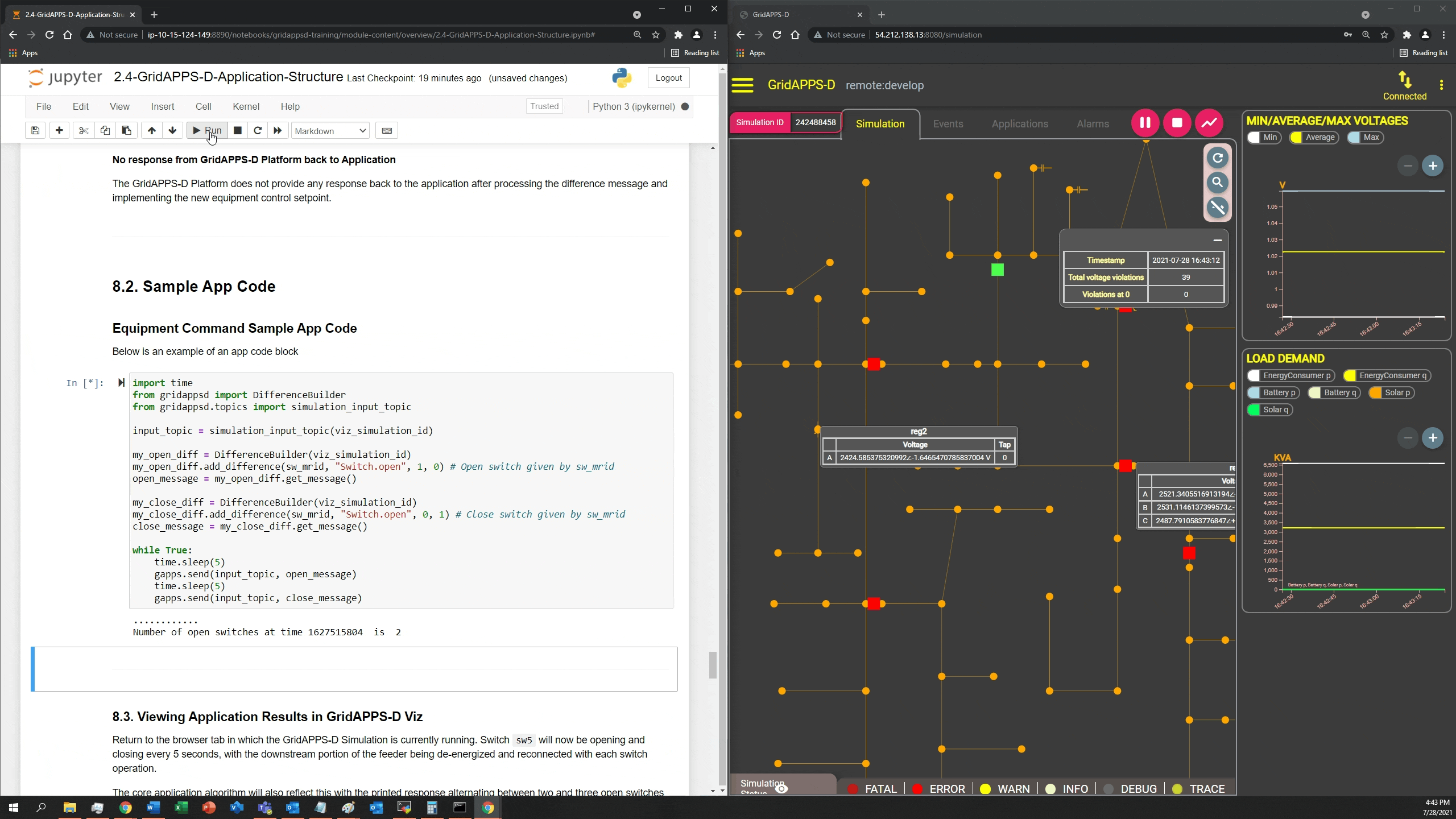Installing GridAPPSD-Python and Notebook Tutorials
Quick Installation
Clone the GridAPPSD-Training Repository and run the ./install.sh script
git clone https://github.com/GRIDAPPSD/gridappsd-training.gitcd gridappsd-training./install.sh
Accept the user terms for Miniconda and Jupyterlab.
After completion, the JupyterLab server will be running in a virtual environment with the training notebooks


To start the jupyter notebooks at a later time, change directories into gridappsd-training and run the ./run.sh script:
cd gridappsd-training./run.sh
Manual Installation
Install Anaconda or Miniconda
If not pip is not installed, use apt-get to install it.
sudo apt-get install python-pip

Download the latest version of Anaconda or Miniconda and save it in the /Downloads folder:
Use Python 3.8 install for 64-bit systems from the Conda.io website.
Use Python 3.7 install for 32-bit systems from the Conda.io website
Install Miniconda using bash
cd /Downloadsbash Miniconda3-latest-Linux-x86_64.sh
![]()
Follow the prompts on the installer screens. If you are unsure about any setting, accept the defaults. You can change them later. To make the changes take effect, close and then re-open your terminal window.
Test your installation. In your terminal window or Anaconda Prompt, run the command conda list. A list of installed packages appears if it has been installed correctly
Install GridAPPSD-Python
Use pip to install GridAPPSD-Python, which is need to pass API Calls to GridAPPS-D platform using the GridAPPSD-Python library methods:
pip install gridappsd-python

Install Jupyter Lab
Use pip to install Jupyter Lab, which is need to open and execute the Python Training Notebooks:
pip install jupyterlab
Download Python Notebooks
The Jupyter / iPython training notebooks are the source materials for the GridAPPS-D ReadTheDocs website.
The notebooks include all the code examples and sample app materials in a format that can connect to a local GridAPPS-D platform session and interact in real-time with simulations in real-time.
Clone the python notebooks in the GridAPPSD-Training repository by running
git clone https://github.com/GRIDAPPSD/gridappsd-training
By default, the notebooks will be saved in the directory gridappsd-training

Clone the python notebooks in the GridAPPSD-Training repository by running
git clone https://github.com/GRIDAPPSD/gridappsd-training
Start the Jupyter notebooks running on port 8890 (to avoid port sharing conflict with the GridAPPS-D Blazegraph database container):
jupyter notebook --port 8890
If running on a remote server (e.g. AWS cloud or university / laboratory server farm), start the notebooks by running
jupyter notebook --port 8890 --no-browser --ip='0.0.0.0'
Port Sharing between GridAPPS-D and Jupyter
By default, both Jupyter and the GridAPPS-D Blazegraph database use port 8889. If a Jupyter notebook is already running on port 8889, the Blazegraph database container will fail to start.
It is recommended to specify manually that Jupyter run on a different port:
jupyter notebook --port 8890
